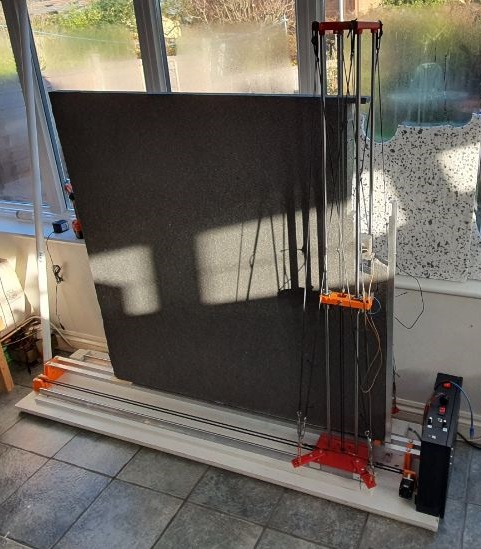Building a CNC Hot Wire Foam Cutter
Some of the early prototypes of the boats lacked boat-like form and as the prototypes got more complex it was clear we needed a tool worthy of the job.
I settled on a 2-axis hot wire CNC, controlled by G-Code, to help make better boat hulls and wings. This was because expanded polystyrene foam has OK mechanical properties (very light buoyant and waterproof), is economical and convenient - since I can buy it in huge sheets from B&Q just up the road.
The CNC hot-wire consists of a bed with 2 parallel rails that support a vertical tower. The tower has a pair of carriages that run on either side of the foam sheet. The carriages have a length of nichrome resistance wire between them that gets hot enough to vapourise the foam and thereby make a smooth precise cut. The machine can move the tower left and right (x-axis) and the carriages up and down (y-axis).
The CNC hot-wire is controlled by an Arduino running GRBL. The step and direction signals from GRBL go to two stepper drivers and the hot wire is operated by a relay and powered by an adjustable buck converter.
The profiles we want to cut are prepared in CAD (normally Fusion 360) and made into G-Code via some home brew software (not very helpful if you're playing along at home). The G-Code is sent to the Arduino via USB using a Java program called Universal G-Code Sender. It definitely works and is free, but it's not very nice to use.
 |
| Cutting lots of nested profiles |
 |
| Cutting a 1200mm x 1200mm sheet |
 |
| Cut profiles |
We successfully used the hot-wire to cut profiles for a wing based on a NACA 0018 profile with a 600mm chord and 2000mm span; overall accuracy was good (for polystyrene). In this design, the profiles are slid onto a length of tube and glued together with foaming polyurethane (Gorilla Glue specifically). The wing was then faired more with some sanding (torture board method).
The machine cost maybe £300 and required small amounts of machining and welding (as that's what I had to hand).
If you're reading this looking to build your own I can send my CAD model and BOM (somehow), but it would be more of a starting point than instructions.



Comments
Post a Comment